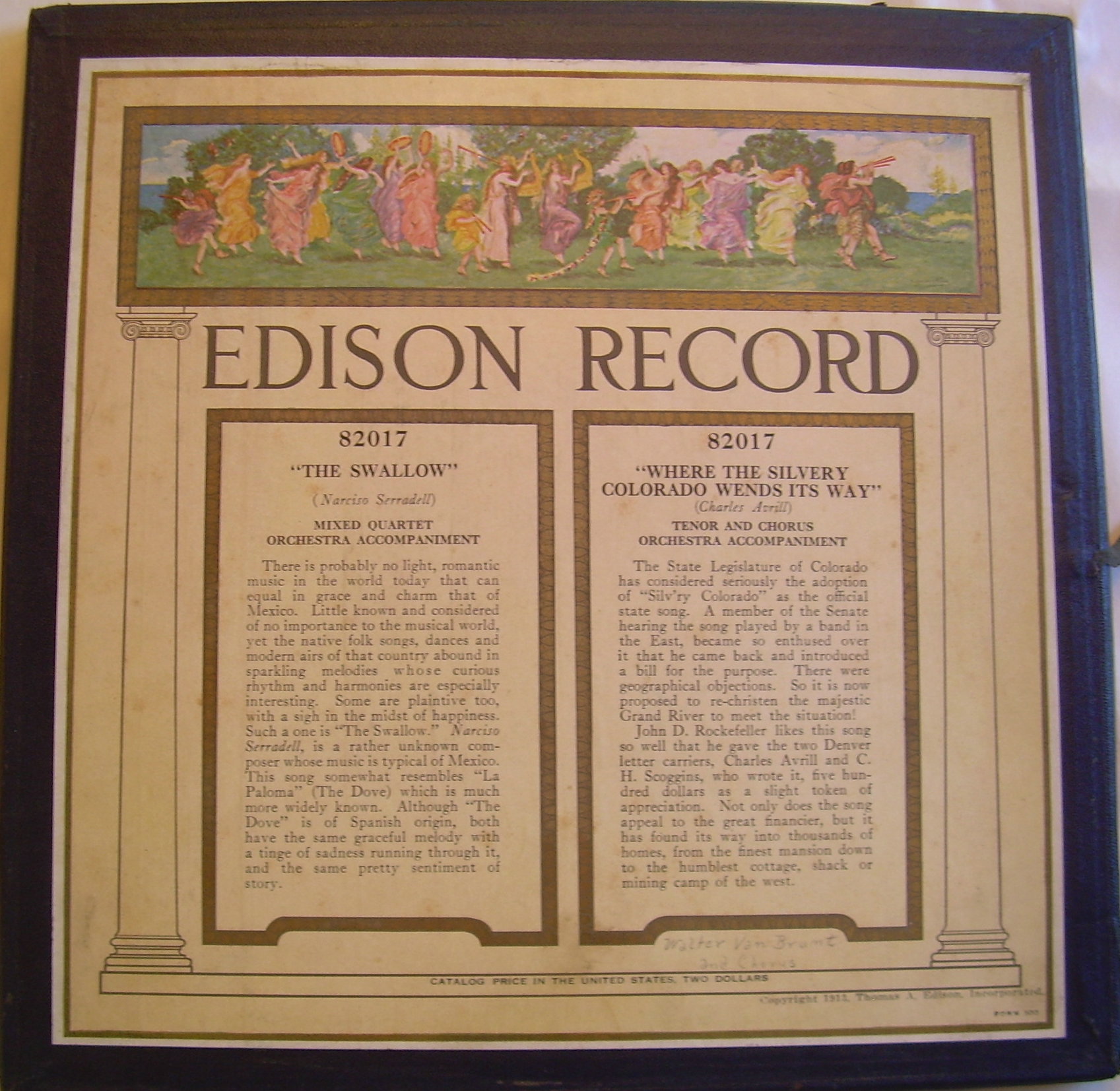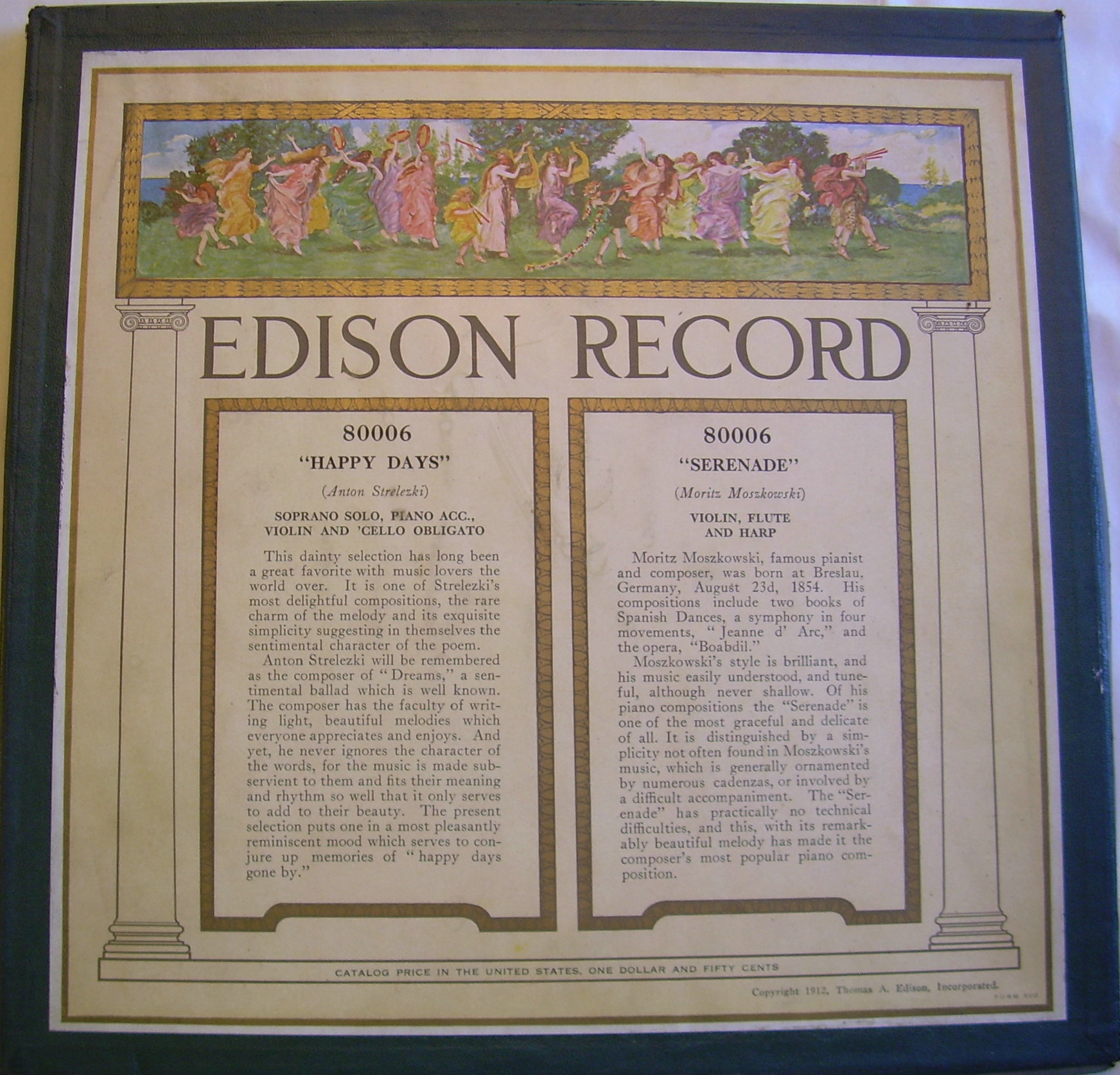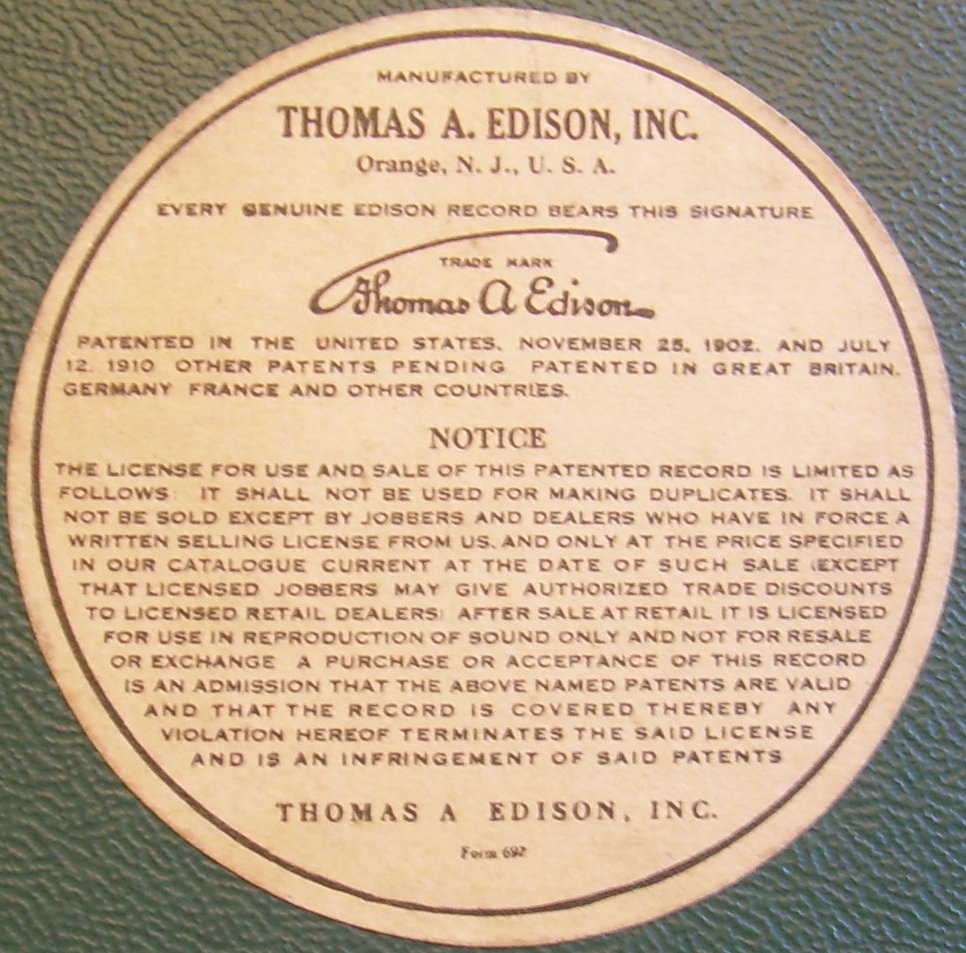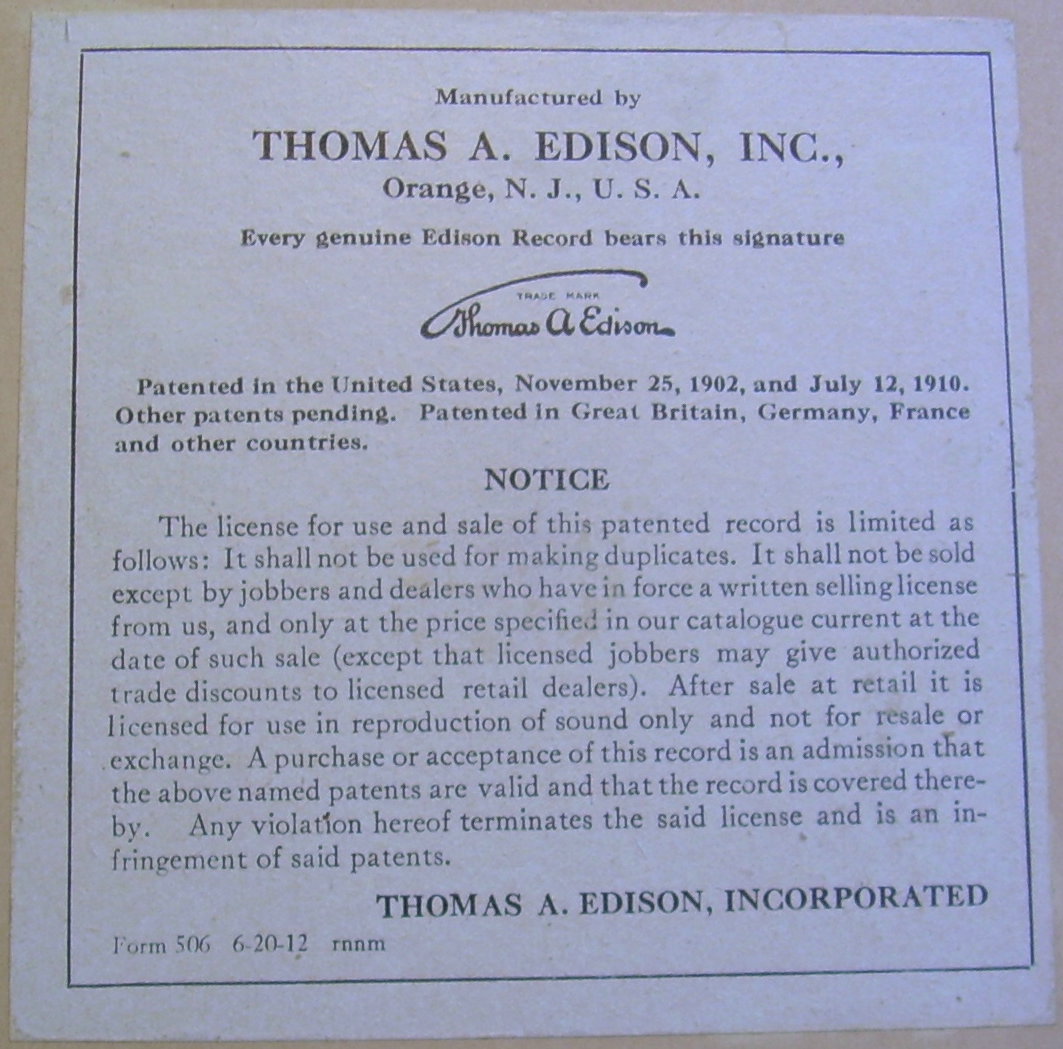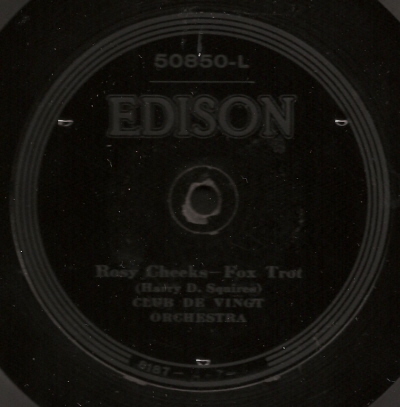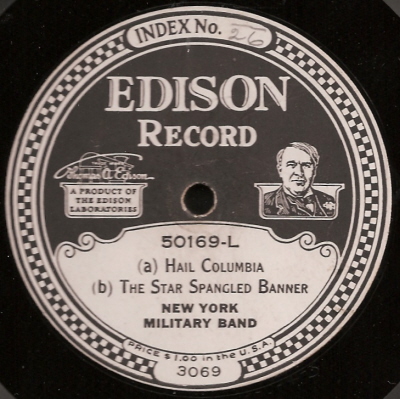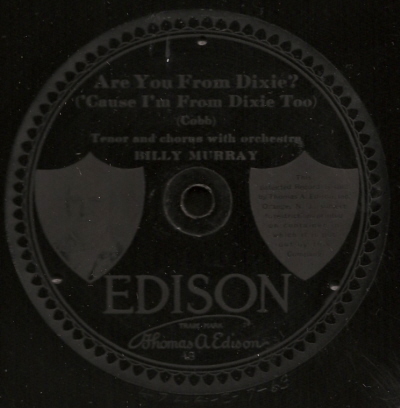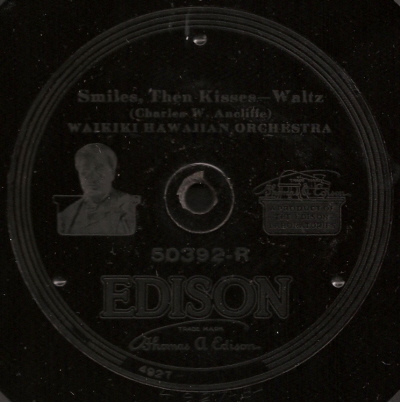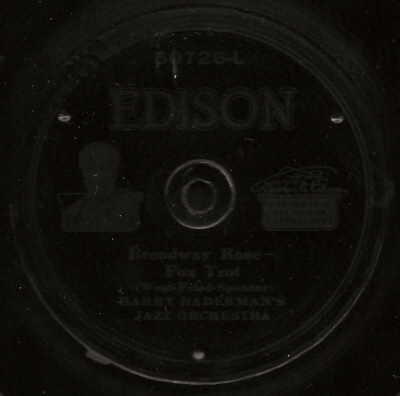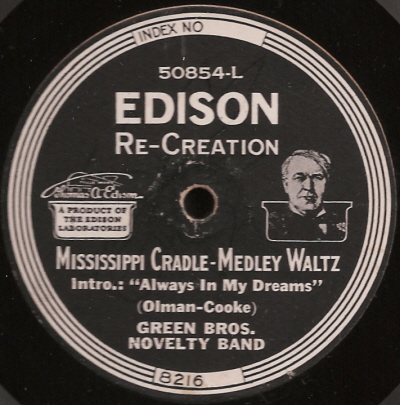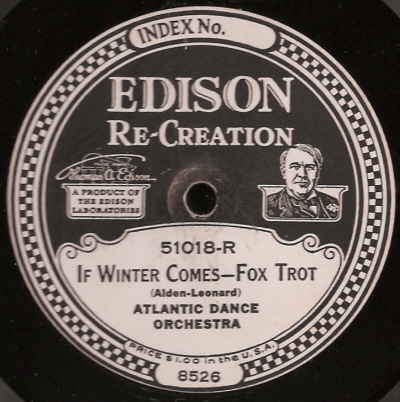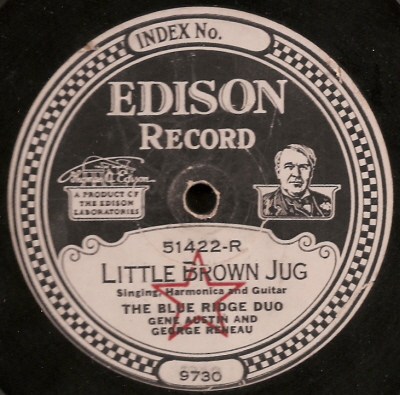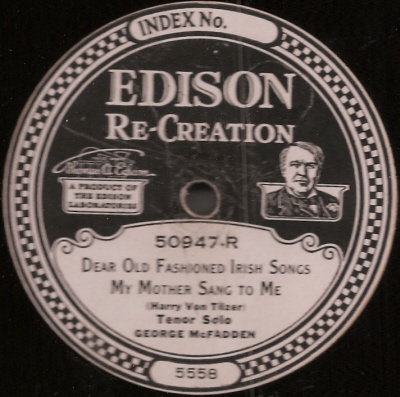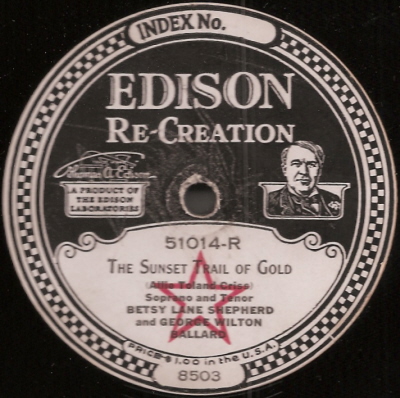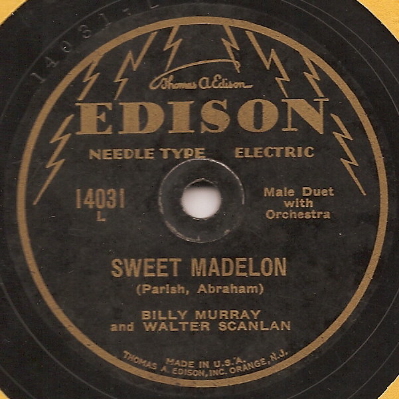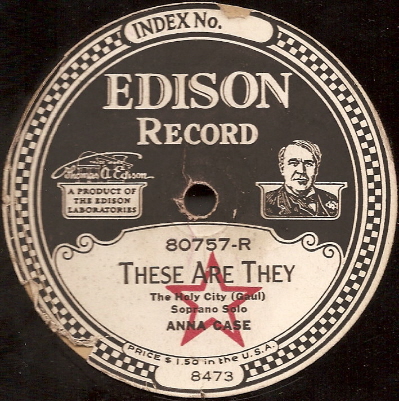78/80 rpm Record Labels - Edison
Although Thomas Edison invented the phonograph back in 1877 he was the last major record company to enter the disc market. Edison held fast to the cylinders up until now. Losing out in the marketplace to the likes of Victor and Columbia it was decided in 1908 to put an Edison disc on the market. It wasn't until October 1913 when they were finally commercially announced along with the machines to play them on. These records are vertical cut and require the Edison disc machines to play them using a diamond point reproducer.
Prior to the October 1913 announcement of the new Edison Disc Records they had been pressing small quantities as samples to dealers and jobbers. These records in 1912 and 1913 were sent out in elaborate presentation boxes. The green ones (below left) were for the 80,000 series and the blue ones (below right) were for the 82,000 and 82,500 series. The first ones had a plain interior with the square notice/patent sticker. Later they were cotton flocked on the inside. On the backs of both types of boxes were round notice/patent sticker, the same size that would be affixed to the bottom of a cylinder box. Once the records were being sent out commerically in October 1913 the boxes were no longer used. Some of the records in these boxes were pairings that were never used together commercially.
For the labels on the Diamond Disc records there are two major types, the molded or etched label and the paper label. The molded labels were in use from 1912 until June, 1921. The paper label was used for the rest of production through 1929. The variations in the molded label below are in order in which they were produced, starting with having Edison's image in a shield. Then there are three variations where not only his image changed but there now three rings around the outside. The last one I have is with no Thomas Edison image at all. This was a transition label just before the paper labels in 1921.
The first paper labels were on an all black background with the words "Edison Re-Creation" then went to a black and white background. Variations include having a price at the bottom or not and the red star. Then it was changed to the words "Edison Record." Variations are with and without the price (on the bottom of the label) and the red star.
The last example I have is an Edison Needle Type. Late in the game for Edison he finally went to a lateral type record. However, it was too little too late. These were introduced in August of 1929 and by October 1929 Edison was out of the record business.
Labels compiled from the collection of Glenn Longwell. Page last updated on October 3, 2008
Please email if you have questions, corrections or comments on anything you see. Thanks.
info@majesticrecord.com
How about no label at all? The one on the left is catalog number 82549, Ave Maria (side not shown) and Explanatory Talk. These classical and operatic records went through a few iterations. At first, they were paired with other songs. Then in late 1913 they went to single sided discs, not unlike the Red Seal Victors that were still single sided long after the rest of their catalog was double sided. In early 1914 they began to pair these songs with either other songs or with an "Explanatory Talk," usually by Harry E. Humphrey. In this latter case there was perhaps a transition where there was no label as you can see here. Just the grooves and a matrix number can be seen. This isn't a fluke as I have 7 examples where there is no label on the side with the Explanatory Talk.
